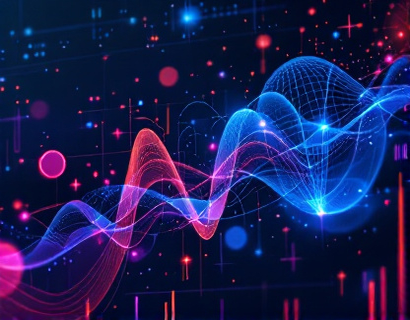Streamlining Professional Communication: Mastering Time-Smart and Block Time-Based Notifications for Enhanced Productivity
In today's fast-paced work environment, efficient communication and organization are crucial for success. A sophisticated multi-platform notification system can significantly enhance productivity by ensuring that professionals and organizations stay informed and organized. This system delivers timely alerts through universal and block time-based schedules, adapting to various workflows and schedules. By implementing such a solution, individuals and teams can reduce missed updates and boost overall efficiency.
The challenge in modern communication lies in the sheer volume of notifications and messages that professionals receive daily. Emails, messages, alerts, and updates from various platforms can easily overwhelm anyone. A well-designed notification system addresses this issue by providing a structured approach to managing these alerts. It ensures that critical information is delivered at the right time, without causing disruption or distraction.
Understanding Universal Time-Based Notifications
Universal time-based notifications are designed to deliver alerts at specific times, regardless of the user's schedule or time zone. This feature is particularly useful for teams operating across different time zones or for individuals who work in environments with variable schedules. By setting a universal time, users can ensure that they receive important updates at consistent intervals, enhancing predictability and planning.
For instance, a project manager can set a universal notification to receive daily progress reports at 9 AM UTC, ensuring that they are always up-to-date with the latest developments, no matter where team members are located. This approach simplifies time management and reduces the need for constant checking of multiple platforms.
Benefits of Block Time-Based Notifications
In contrast, block time-based notifications allow users to define specific time blocks during which they receive notifications. This feature is ideal for those who prefer to manage their communication in batches, reducing the frequency of interruptions and allowing for deeper focus on tasks. By grouping notifications into designated time slots, users can minimize distractions and maintain productivity.
For example, a software developer might set block time-based notifications to receive code review alerts and bug reports between 10 AM and 12 PM and again from 2 PM to 4 PM. This schedule allows for concentrated work periods without the constant interruption of notifications, followed by dedicated time to address and respond to messages.
Adapting to Various Workflows
The versatility of a multi-platform notification system is one of its key strengths. Whether you are using email, messaging apps, project management tools, or social media platforms, a comprehensive notification system can integrate seamlessly with all your preferred tools. This integration ensures that you receive notifications consistently across all platforms, eliminating the need to switch between multiple apps or check each one individually.
Moreover, the system can be customized to fit different workflows. For instance, a marketing team might require frequent updates on campaign performance, while a customer support team might need real-time alerts for incoming queries. The notification system can be tailored to meet these specific needs, providing the right balance of information and timing.
Enhancing Productivity Through Smart Scheduling
One of the most significant advantages of a time-smart notification system is its ability to enhance productivity. By delivering notifications at optimal times, the system helps users stay focused and efficient. For example, scheduling notifications during less busy periods of the day can reduce stress and improve the quality of work. This strategic timing ensures that critical information is processed when the mind is most alert and receptive.
Additionally, the system can learn from user behavior and preferences over time, further optimizing notification delivery. Machine learning algorithms can analyze when users are most active and responsive, adjusting the timing of notifications to maximize engagement and minimize disruption. This adaptive approach ensures that the notification system remains effective and user-friendly.
Reducing Missed Updates
Missed notifications can lead to significant delays and miscommunications, especially in fast-paced environments. A reliable notification system minimizes the risk of missed updates by ensuring that alerts are delivered promptly and consistently. Universal time-based notifications are particularly effective in this regard, as they provide a consistent reference point regardless of individual schedules.
For instance, in a scenario where a critical project update is sent via a universal notification at 2 PM GMT, team members in different time zones can set their local times to receive the alert at a convenient hour. This approach ensures that everyone is informed in a timely manner, reducing the chances of important information being overlooked.
Improving Collaboration and Communication
Effective communication is the backbone of successful collaboration. A sophisticated notification system fosters better teamwork by keeping all team members informed and aligned. By centralizing notifications, the system ensures that everyone has access to the same information at the same time, promoting transparency and accountability.
For example, in a cross-functional team working on a complex project, a notification system can send updates on task progress, deadlines, and changes in real-time. This immediate access to information helps team members stay on the same page, reducing misunderstandings and improving overall project outcomes.
Customization for Different Roles and Responsibilities
The flexibility of a multi-platform notification system extends to customization based on individual roles and responsibilities. Different team members may require different types and frequencies of notifications. The system can be configured to meet these diverse needs, ensuring that each user receives the most relevant and timely information.
For instance, a sales manager might need daily summaries of sales performance and customer interactions, while a data analyst may require hourly updates on key metrics and reports. By tailoring notifications to specific roles, the system enhances the efficiency and effectiveness of each team member.
Integration with Existing Tools and Platforms
Seamless integration with existing tools and platforms is a critical feature of a robust notification system. Whether you use Google Workspace, Microsoft Office, Slack, Asana, or any other popular tool, the notification system should work harmoniously with these platforms. This integration ensures that notifications are consistent and reliable, without the need for manual syncing or additional setup.
For example, a notification system can pull data from a project management tool like Asana and send updates on task status changes directly to a user's email or messaging app. This integration saves time and reduces the risk of missed information, as all relevant notifications are handled in one place.
User-Friendly Interface and Settings
A user-friendly interface is essential for the widespread adoption and effective use of a notification system. The settings should be intuitive, allowing users to easily customize their notification preferences without requiring technical expertise. Clear and concise options for setting universal and block time-based notifications ensure that users can quickly adapt the system to their specific needs.
Additionally, the system should provide real-time feedback and confirmation when settings are changed, enhancing the user experience. This immediacy helps users feel in control of their notification flow, boosting confidence and satisfaction with the tool.
Enhancing Focus and Reducing Distractions
One of the most significant benefits of a well-designed notification system is its ability to enhance focus and reduce distractions. By controlling the timing and frequency of notifications, users can create a work environment that supports deep concentration and productivity. Block time-based notifications, in particular, help create uninterrupted work periods, allowing for more meaningful and impactful work.
For example, a writer might set block time-based notifications to receive email alerts only during designated breaks, ensuring that the majority of the workday is free from interruptions. This approach can lead to higher quality output and a greater sense of accomplishment.
Supporting Remote and Hybrid Work Models
The rise of remote and hybrid work models has placed a greater emphasis on effective communication tools. A multi-platform notification system is particularly valuable in these settings, as it ensures that team members stay connected and informed, regardless of their physical location. The system can integrate with various communication tools used in remote work, such as video conferencing software, instant messaging apps, and cloud storage services.
For instance, a remote team can use the notification system to schedule daily stand-up meetings, receive updates on project progress, and get real-time feedback on tasks. This structured approach helps maintain a sense of unity and collaboration, even when team members are working from different locations.
Conclusion
In conclusion, a sophisticated multi-platform notification system that offers both universal and block time-based notifications is an invaluable tool for professionals and organizations seeking to enhance productivity and streamline communication. By providing timely, consistent, and customizable alerts, such a system helps individuals and teams stay organized, focused, and efficient in today's fast-paced work environment. Embracing this technology can lead to significant improvements in workflow, collaboration, and overall performance.










































